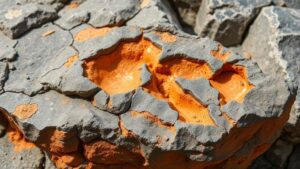Techniques for Locating Hidden Gravel Pay Streaks Along Riverbends
Techniques for Locating Hidden Gravel Pay Streaks Along Riverbends
Finding hidden gravel pay streaks along riverbends is a critical skill for prospectors, as these areas often harbor valuable minerals. This article explores effective techniques for locating these deposits, providing both historical context and practical applications.
The Importance of Riverbends in Mining
Riverbends are particularly advantageous for prospectors due to their natural geological features. According to a study by the U.S. Geological Survey, river bends can concentrate gold and other heavy minerals as they flow, creating zones that are rich in resources. This phenomenon occurs because lighter materials are swept away while heavier particles settle in eddies and behind obstacles.
Techniques for Locating Gravel Pay Streaks
Locating gravel pay streaks requires a combination of observational skills, geological knowledge, and practical techniques. Below are several methods that can effectively enhance the prospecting process:
- Hydraulic Mapping: This technique involves studying the flow patterns of water to identify areas where sediment is likely to accumulate. Use Google Earth or topographical maps to pinpoint river bends and analyze the hydrology.
- Test Panning: A simple yet effective method, test panning requires filling a pan with gravel from suspect areas, then shaking it to separate lighter materials. Positive results from multiple test pans can indicate a pay streak.
- Magnetic Surveys: Utilizing magnetometers can help identify heavy mineral deposits by detecting magnetic anomalies associated with minerals like iron or magnetite that often accompany gold.
Understanding Geological Indicators
Another vital aspect of locating pay streaks involves recognizing geological indicators that suggest the presence of hidden deposits. Key indicators include:
- Mineralized Zones: Areas with visible quartz veins, iron staining, or other indicators of mineralization can direct prospectors towards richer deposits.
- Boulders and Cobble Deposits: Large rocks can disrupt river current and create pockets where sediments, including gold, may settle. e formations are worth investigating.
- Streambed Composition: Observing the composition of the streambed, including size and distribution of particles, can indicate where heavier materials are likely to be trapped.
Use of Technology in Modern Prospecting
Advancements in technology have revolutionized gold prospecting practices. Drones equipped with cameras can provide aerial views of potential mining areas, while GPS technology helps in mapping out key locations for detailed examination. Also, portable XRF analyzers allow prospectors to conduct immediate analyses of sediment to identify gold content.
Case Studies
Looking at real-world examples can help illustrate the effectiveness of these techniques:
- California Gold Rush (1849): Early prospectors utilized river bend mapping and test panning to discover rich gravel deposits, leading to significant gold finds in areas like the American River.
- Alaska Hard Rock Mining: Modern prospectors in Alaska employ magnetic surveys and high-resolution aerial imagery to uncover buried pay streaks in rugged terrains.
Potential Questions and Concerns
When venturing into prospecting, several questions may arise:
- What regulations must I follow?
Always check with local authorities regarding mining regulations and permits necessary for gold prospecting in your area. - Is it safe to prospect alone?
It’s advisable to work with a partner or group, especially in remote areas, to ensure safety and assist in emergencies.
Conclusion and Actionable Takeaways
Locating hidden gravel pay streaks along riverbends demands a blend of traditional techniques and modern technology. Prospective miners should prioritize hydraulic mapping, test panning, and observing geological indicators while also considering innovative strategies like drone surveillance and portable analyzers. By incorporating these methods and learning from historical case studies, prospectors can significantly enhance their chances of finding valuable resources.
For those interested in furthering their skills in prospecting, attending workshops or joining local prospecting clubs can provide invaluable hands-on experience and networking opportunities.



